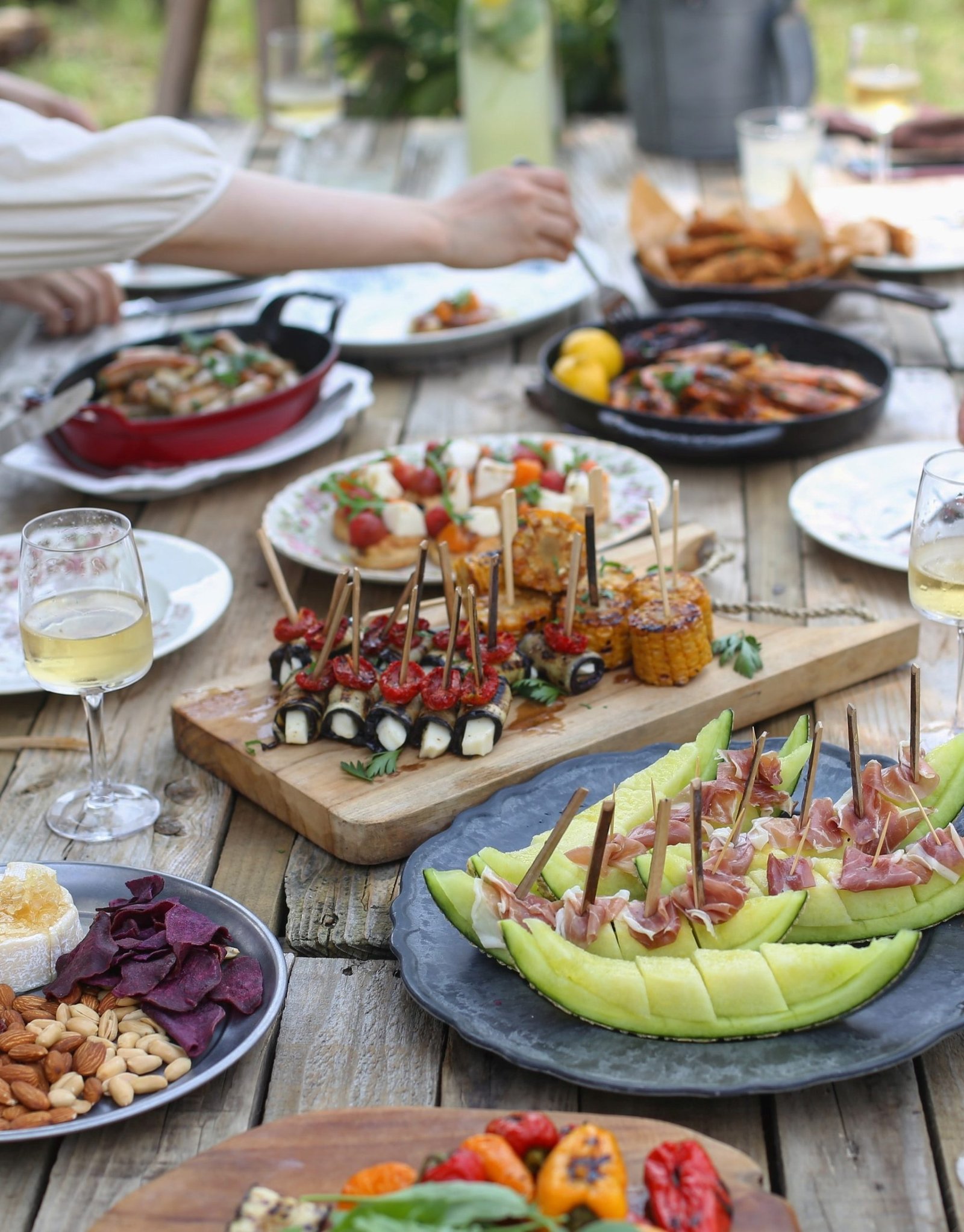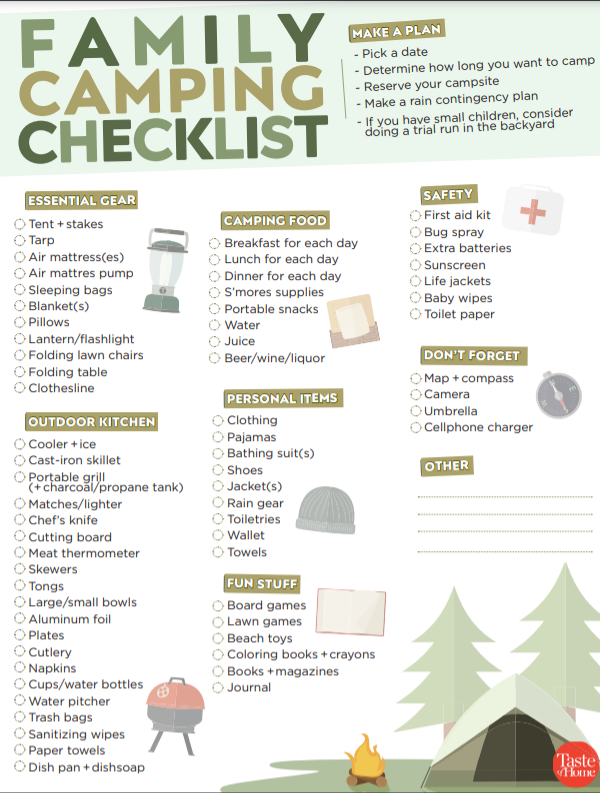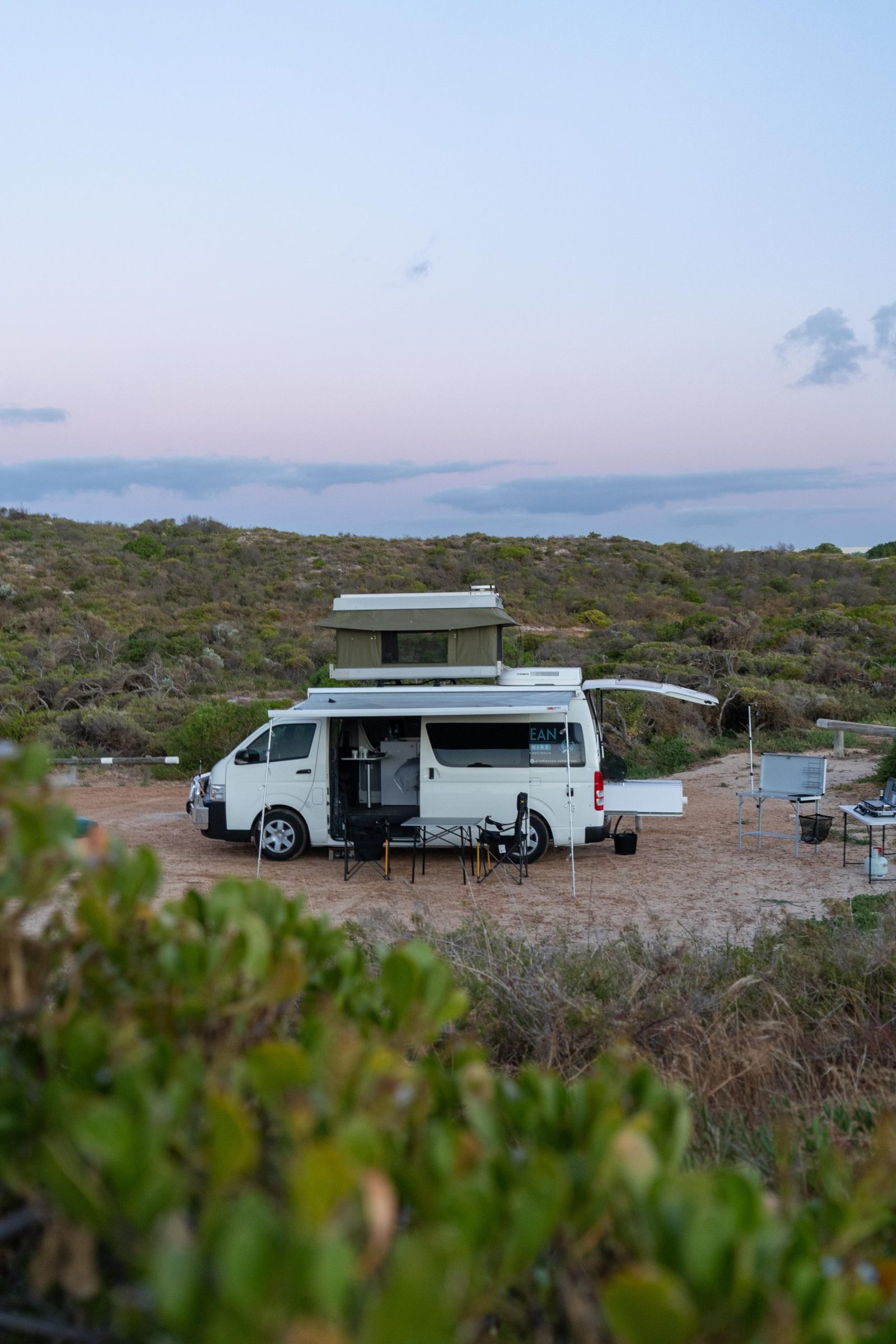We’ve just returned home from our first car camping weekend of the summer. Our home was our Kelty tent perched high above the Ohanapecosh River, swollen with snowmelt off the southeastern flank of Mount Rainier. I could not have gotten our family out the door on Friday without my trusty car camping checklist, honed to near-perfection after years of trial and error.
I promise you, there is no hair dryer on my car camping pack list. The key to a great car camping checklist (and car camping experience) is to trim down to the basics with just a handful of comforts tossed in. This will help you find a near-perfect balance of enjoying the great outdoors while still being quite comfortable.
Below, I share with you my car camping checklist. I use a checklist, always, so that I won’t ever find myself in the middle of the Wenatchee National Forest without tent poles again. Keep this checklist with your camping gear so it’s always handy when you need it.
Click for a print-friendly PDF of the car camping checklist.
Shelter

Need a tent? We put together this handy tent finding guide that will help you zero in on some good options for your needs (what size tent is best for you, how much rain protection you need, the best tent on a budget, etc.) Most tents come with a rain fly and ground cloth (also called footprint) but some don’t – so check.
A regular old blue tarp will work as a ground cloth (or rain fly) in a pinch. (In fact, for car camping I rather prefer a sturdy tarp as a groundcloth). Always try out a new tent in your backyard or city park before heading out into the wilderness so that you are familiar with how to assemble it and know you have all the parts you need. I sometimes skip the extra tarp and rope on this list, but if it’s raining, it’s so nice to have a tarp hung over your head while you’re cooking up dinner.
- Tent
- Tent poles
- Rain fly
- Ground cloth or tarp
- Extra tarp and rope
- Camp chairs to sit on around camp
Sleeping

Car camping affords you the luxury of sleeping in (relative) comfort when compared to backpacking, where every single ounce is counted. I use the same sleeping bag for both. I’m a cold sleeper and being cold can keep me awake for hours, so I love my 15 degree goose down bag by Marmot and the price is fantastic. A lighter-weight bag will save you some money. If you only camp late spring – late summer, aim for one that is rated 20-50 degrees F, like this Coleman Sleeping Bag that’s just $30 and has great ratings.
You can always bring along extra blankets when you are car camping, too–I love this Mambe Classic Outdoor Blanket). REI has a sleeping bag finder on its website to help you find one that suits your needs and budget (use the left-side advanced search boxes to zero in on the perfect bag). For sleeping pads, your car camping options range from a deluxe-thickness Therm-a-Rest to a family-friendly air mattress. (This past weekend, we opted for the air mattress and it was heavenly).
- Sleeping pads, cots or air mattress
- Sleeping bags (optional: extra blankets)
- Pillows (or pillow cases to stuff clothes in and create a pillow)
Cooking Meals

We have two stoves – a basic Coleman propane stove for car camping, and an MSR Pocket Rocket backpacking stove (which is one of my favorite things, like in the world.) In my experience, dual-fuel stoves can be a little tricky, and so we always bring the MSR along on car camps just in case. I’ve no doubt that our issues with the Coleman have been user-error. It illustrates, though, that you should know how to use your stove really well before you get to camp. Learn how to use it before you leave the store.
If you buy your stove online, practice assembling and lighting the stove in your driveway before you go. In fact, you will ideally test your stove each and every time before you go camping. For cookware, I use Seattle-based MSR products and think they’re the best – this stainless cookset is all you need.
- Camp stove
- Fuel (white gas, propane – different stoves require different fuels)
- Firestarter (matches and lighter)
- Cookset (pots/pans) and cooking utensils
- Coffee maker / percolator
- Eating utensils (plates, bowls, cups, forks, spoons for each person)
- Garbage bags
- Ziplock bags in various sizes
- Aluminum foil and/or saran wrap
- Biodegradable soap and a sponge
- Bucket or camp sink for washing dishes
- Handkerchiefs (we use these as napkins) and dish towels
- Paper towel roll
- Can opener, bottle opener, knife, cutting board, etc.
- Cooler and ice
- Tablecloth for picnic table
- Jugs of drinking water (if not available)
- Empty pitcher or jug for transporting water (if the campground provides potable water)
Food
Car camping gear is usually a bit easier to prescribe in a list than car camping food. I have some basic items below, but the key here is to plan out each and every meal in advance and have the complete list of ingredients you will need for the dishes you plan to make.
I pre-measure and pack all of my ingredients beforehand, keeping all of the ingredients together that I’ll need for each meal in separate gallon-sized ziplocks. Repack bulky items like boxed pasta to leave excess packaging at home. This makes cooking a cinch and helps cut down on camp clutter and trash.
Don’t forget any utensils you will need, such as a can opener, cutting board or bottle opener. (Many multitools have several useful utensils built into one device. I use this medium-priced Swiss Army Knife).
One of my favorite sources of camp recipes is the Seattle area-based trailcooking.com. Take their recipes with you using their book, Trail Food Made Gourmet.
- Ingredients for each meal (and recipes, if needed)
- Snacks for energy and high on variety, like bars, trail mix, raisins, jerky, mixed nuts, cheese crackers, m&ms, yogurt pretzels and sesame sticks. Parmesan and cheddar cheese keeps well.
- Dried fruit and sturdy fresh fruit like apples
- Bread and the makings for PB&J (great to have on hand for extra food if your stove doesn’t work!)
- Salt, pepper, and other condiments (like cooking oil).
- Coffee and cream/sugar or tea
- Hot cocoa mix (and insulated mugs!)
- Other beverages (milk, pop, juice, koolaid mix)
- Popcorn and campfire popper
- Makings for s’mores (graham crackers, marshmallows and chocolate. We add cinnamon or peanut butter, too)
Here are some easy camping breakfast ideas you can refer to.
Camping Safety
It’s easy to create your own first aid kit from items you already have at home, but here’s an affordable first aid kit that is great to grab and go for a day hike or a car camping trip.
Many campgrounds provide safe drinking water (often called potable water in the campground’s amenity details), but some primitive ones do not. Pack in your own water in a vessel (like this one from Coleman) or bring a water filter, provided there’s a natural water source nearby.
In the event that you show up to a campground without potable water and you didn’t bring a filter, all is not lost. In a pinch, you can always boil stream water to ensure it is safe to drink. Just gather water from a stream and boil it for one minute plus an additional minute for each 1,000 feet of elevation you are at (so if the campground is at 4,000 feet elevation, boil the water for 5 minutes). This method consumes a lot of stove fuel and time, so I don’t recommend it unless you’re in a pinch.
- First-aid kit with different bandages, ointments, etc.
- Insect repellent (non-toxic for kids) and Sting Eze
- Citronella candle to keep bugs away from the picnic table
- Sunblock for sensitive skin
- Duct tape (good for all kinds of quick repairs)
- Moleskin (for those pesky blisters)
- 100% aloe vera gel for accidental sunburn
- Calamine lotion for poison oak
- Hydrocortisone for skin reactions
- Water filter or purification tablets (just in case)
- Headlamps (one for each person)
- Flashlight and extra batteries
- Whistle (for calling out for help)
- Walkie Talkies (two-way radios)
- OTC medications like advil and aspirin
- Prescription medications for your family members
- Allergy medication like benedryl
- Directions to the nearest emergency medical facility
- Cell phone, and a car charger for it
Toiletries and Personal Items
I use wet wipes for cleaning up all kinds of little messes when car camping. Whenever possible, get your toiletries unscented. I remember spending a paranoid night in a tent in Alaska grizzly country because my deodorant smelled like lavender.
- Washcloths and towels (for swimming or bathing)
- Biodegradable soap / shampoo
- Toothbrushes/paste
- Toilet paper (and a trowel if there is no flush or pit toilet)
- Wet wipes (handy for cleaning hands and face)
- Hand sanitizer
- Deodorant
Clothing
Wear whatever is comfortable when you’re camping. I live in leggings at camp. Bring layers like a lightweight fleece or down vest to stay warm at camp when the temperature dips at night. My “camp shoes” of choice are Chaco sandals, which double as hiking sandals. Again, I like to keep things simple. However, I don’t skimp on quality, because I hike a lot and wear things hard. Day hiking is almost always on the agenda, so pack accordingly.
- Rain gear
- Fleece jacket and/or down vest
- Hiking shoes or boots
- Camp shoes (sandals or crocs)
- Socks (avoid cotton, instead try wool socks or polypro)
- Long underwear top/bottom (wool or polypro)
- Shorts (Patagonia baggies are the best, ever.)
- Pants
- Shirts (think layers – tank, tshirt, long-sleeved tshirt)
- Underwear
- PJ’s
- Swimming suits
- Warm hat and gloves
- Sunglasses and baseball hat
Miscellaneous
- Small broom (good for sweeping off the picnic table or sweeping out the tent)
- Your campground reservation info
- DeLorme Gazetteer for the state we’re camping in
- Directions to the campground
- Cash and quarters (some campgrounds have coin-operated showers)
- Hiking guidebook for nearby trails
- Binoculars and nature guidebook
- Emergency contact numbers for our car and on our person
- Digital camera
- Water bottles for each person
- Daypacks for day hiking
- The Ten Essentials for the daypack
- Books and games
If you’re packing for a family, your car camping checklist will naturally be a little longer. Babies require everything from diapers to a pack ‘n play (we’re past that stage.) For older kids, remember to bring along some activities like a frisbee, bikes, scooters and fishing poles to keep the kids occupied and happy (and to help keep their minds off the iPad you left back at home.)
Happy camping!
Don’t forget to download the Car Camping Checklist as a PDF here so it’ll be a cinch to pack for your next camping trip!
The originally article was published by The Northwest Trip Finder (edited).




Leave a Reply